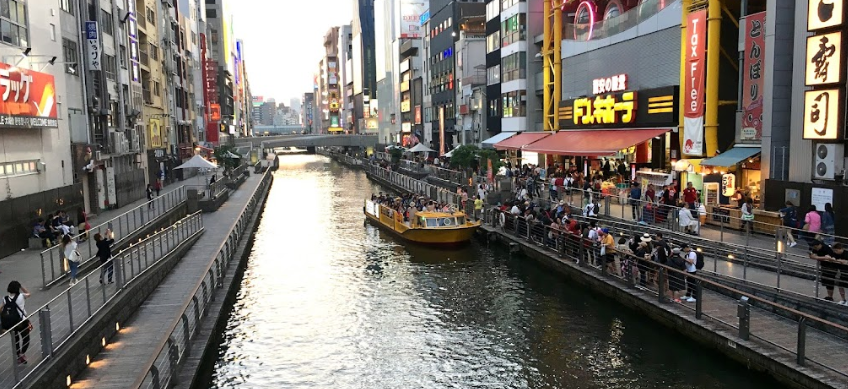
If you are planning to osaka famous places to visit, Osaka prefecture is a must-see destination. Located in the Kansai region of Honshu, Osaka is a stunning city that captivates visitors with its unique blend of history, culture, and modernity. As the capital of the prefecture and the third most populous city in Japan, Osaka offers a vibrant and dynamic atmosphere. Immerse yourself in the splendor of Osaka Castle, wander through the bustling streets of Dotonbori, and experience the thrilling rides at Universal Studios Japan.
Don’t miss the towering Tsutenkaku Tower and indulge in Osaka’s renowned street food scene. With its rich heritage, captivating attractions, and warm hospitality, Osaka promises an unforgettable journey through the heart of Japan.
What is Osaka Famous for?
Osaka, a city steeped in history and modernity, has long been Japan’s financial hub, boasting the prestigious Osaka Exchange and housing major corporations like Sharp, Panasonic, and Osaka Electric and Industrial Co. It thrives as a cosmopolitan and multicultural metropolis, drawing people from all corners of the globe.
Beyond its economic prowess, Osaka is renowned for its exceptional education and research institutions, including Osaka University, Kansai University, and Osaka Metropolitan University. This emphasis on intellectual pursuits contributes to the city’s vibrant and innovative atmosphere.
Osaka’s landscape is adorned with iconic landmarks that leave a lasting impression on visitors. The awe-inspiring Osaka Aquarium Kaiyukan, the majestic Osaka Castle, the vibrant streets of Dōtonbori, the towering Tsūtenkaku in the Shinsekai area, the striking Abeno Harukas, the serene Tennōji Park, the revered Sumiyoshi Taisha Grand Shrine, and the ancient Shitennō-ji Temple—all beckon travelers to explore and immerse themselves in the rich cultural tapestry of Osaka.
As a result, Osaka attracts countless tourists, particularly families seeking memorable vacations. With its blend of historical treasures, modern marvels, and warm hospitality, Osaka offers an enticing destination that promises a delightful and fulfilling experience for all who visit.
Osaka’s Textile Industry
Known as the “Manchester of Japan,” Osaka has earned this moniker due to its prominence as a crucial textile center in the country. Several geographical factors have played a pivotal role in the development of the textile industry in Osaka.
Situated in the Kansai region, Osaka benefits from its strategic location near abundant water sources, including the Yodo River and Osaka Bay. These waterways provide essential resources for textile production, such as power for machinery and a means of transportation for raw materials and finished products. The availability of these resources has facilitated the growth and success of the textile industry in the region.
The textiles manufactured in Osaka are not only distributed throughout Japan but also exported to international markets. The industry’s reputation for high-quality fabrics, innovative designs, and advanced manufacturing techniques has propelled Osaka’s textile products onto the global stage. From traditional Japanese textiles to modern fashion fabrics, Osaka’s textile industry caters to diverse consumer demands worldwide.
This vibrant industry has fostered a rich ecosystem of textile manufacturers, designers, suppliers, and related businesses in Osaka. It continues to be a significant contributor to the local economy, providing employment opportunities and driving economic growth.
For those interested in textiles, Osaka offers a wealth of opportunities to explore its textile heritage and witness the intricate craftsmanship firsthand. Textile enthusiasts and fashion lovers alike can delve into the fascinating world of textiles by visiting museums, attending exhibitions, and even participating in workshops that showcase Osaka’s textile expertise.
In summary, Osaka’s textile industry, known as the “Manchester of Japan,” owes its success to favorable geographical factors, a tradition of excellence, and a global reputation for quality and innovation. It remains an integral part of the city’s economic fabric and offers a captivating glimpse into the world of textiles in Japan.